One of the most popular semi-precious stones for jewelry is the garnet. It is common-enough in nature to be an affordable stone, and can be quite beautiful if cut and polished properly. I have three pieces of garnet jewelry: a pair of earrings given to me by my mother as a birthday gift, and two rings which I purchased, myself.
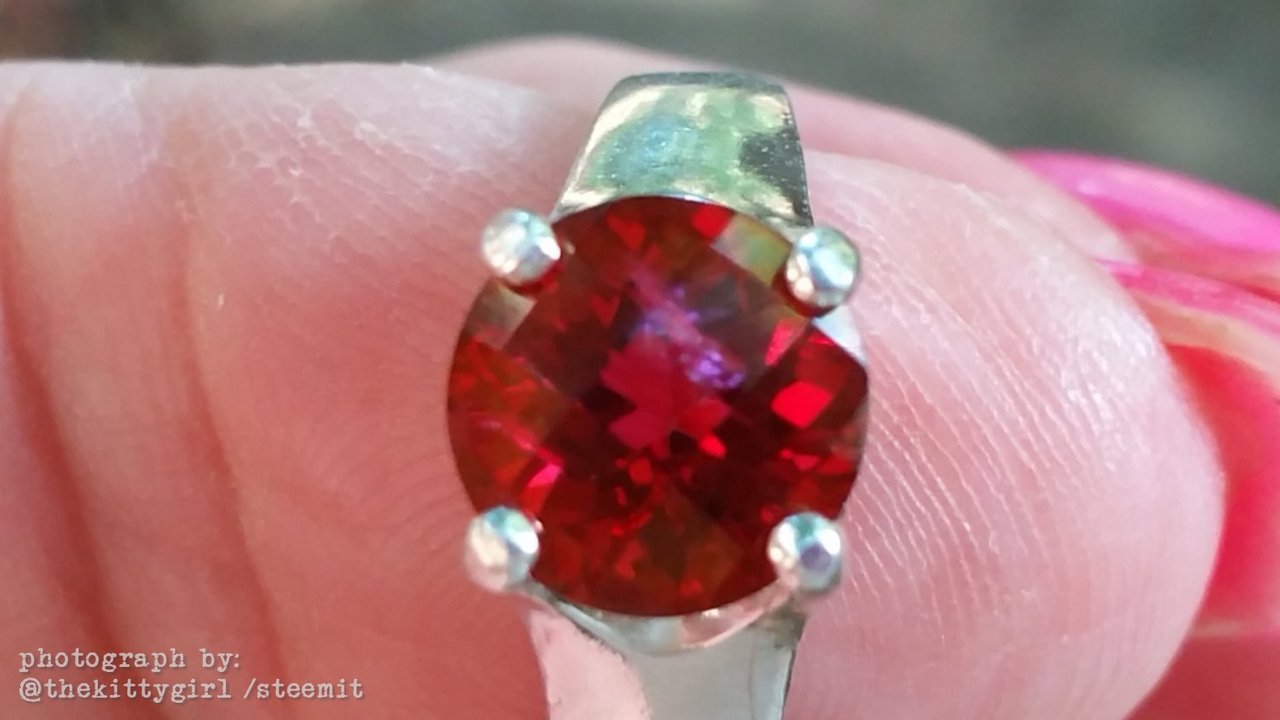
This is one of the rings, a "cherry garnet" which I found on etsy.com a few years ago:
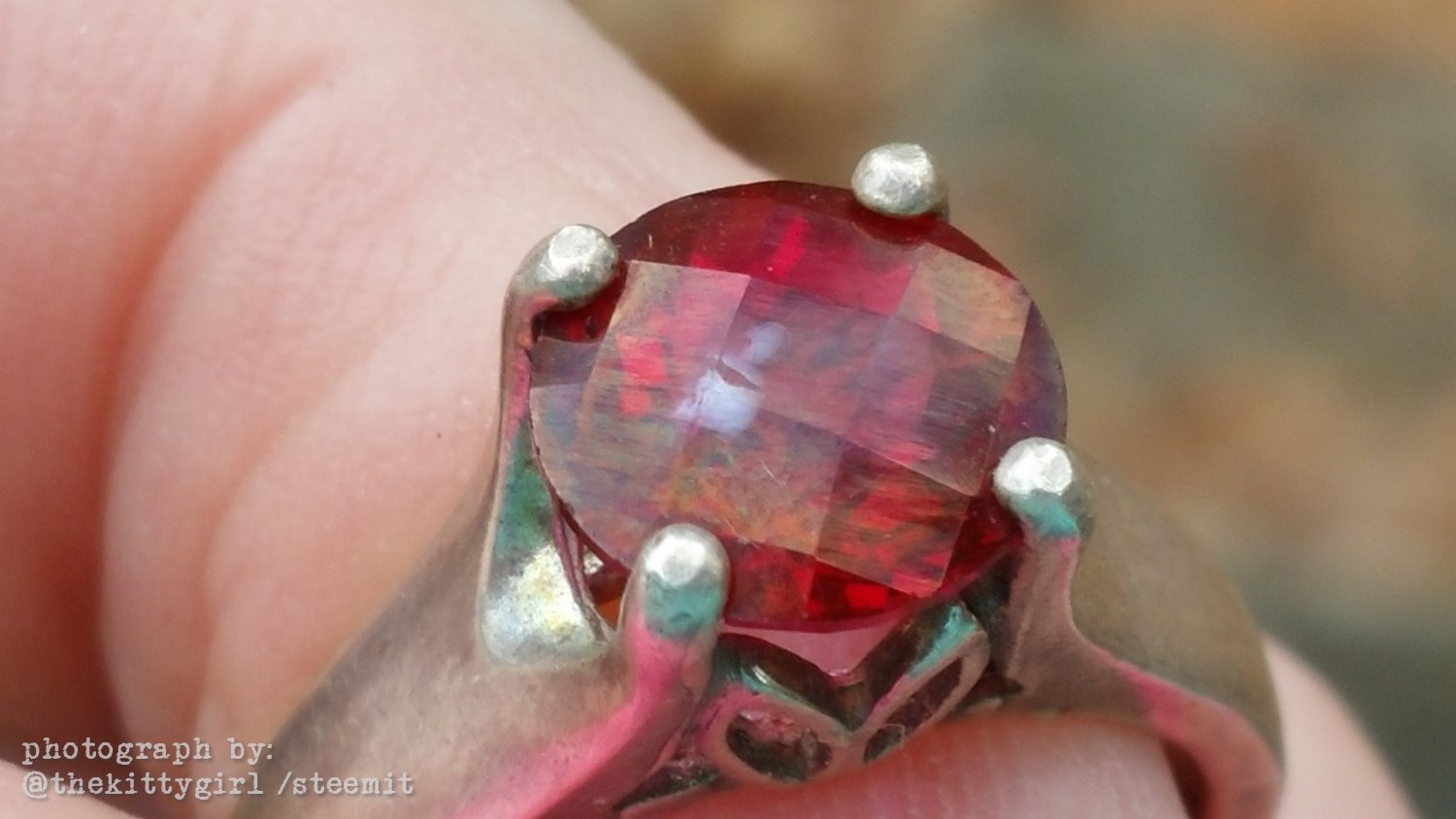
It is common knowledge that many stones which are mounted into rings are placed in an elevated setting to allow more light to pass through the stone. This is especially important for dark stones such as the garnet, and this stone was mounted in such a manner:
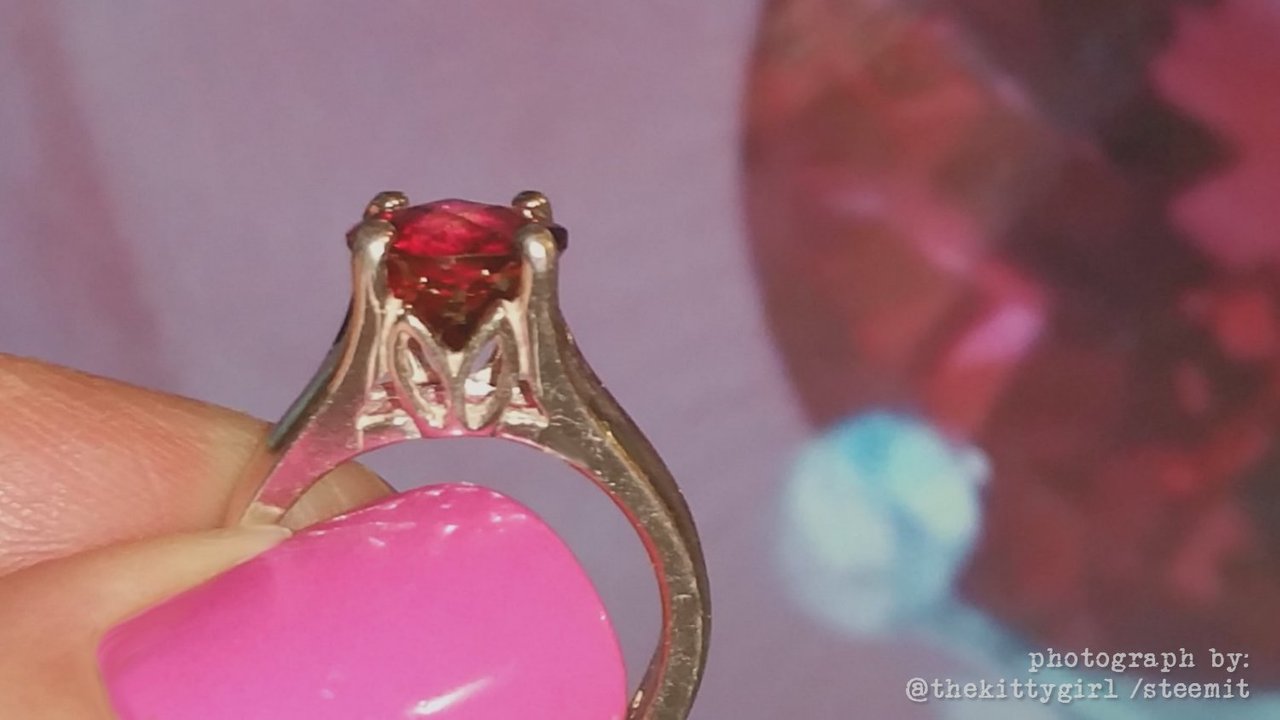
Garnets are a complex family of minerals. As revealed in Wikipedia and other sites, the basic chemical analysis in their structure is represented by the following formula:

where 'X' can be Calcium, Manganesium, Iron, or Manganese
and 'Y' can be Aluminum, Iron, or Chromium.
If 'Y' is aluminum, then the garnet is referred to as:
- "Almandine" if Iron is in the 'X' position,
- "Pyrope" if Magnesium is in the 'X' position, and
- "Spessartine" if Manganese is in the 'X' position.
Other names are applied to garnets with other elements in the 'X' and 'Y' positions. The website gemselect.com reports that, "Garnet is a gem group that occurs in over twenty varieties."
All of these possible combinations of elements in the 'X' and 'Y' positions can be daunting, and each combination influences the color and the hardness of the stone. The most common varieties of garnet are red, but minerals.net lists alternative colors as green, yellow, orange, brown, pink, purple, gray, and even black.
Also, because of the similarities of the colors, it can be difficult to distinguish between some varieties of garnets. For instance, I am not certain if the ring pictured above is an Almandine or a Pyrope, and it really doesn't matter except for those, like me, who like to know such things! An experienced lapidary (a person who cuts, polishes, or engraves gems) might be able to look at this stone, in-person, and give an educated guess. However, an absolutely positive identification is impossible without a scientific analysis of the composition of the stone.
The other garnet ring I have is also a mystery. The garnet is a pinkish color, so it is likely either a Rhodolite (my pick) or Spessartite. I wear this ring quite often!
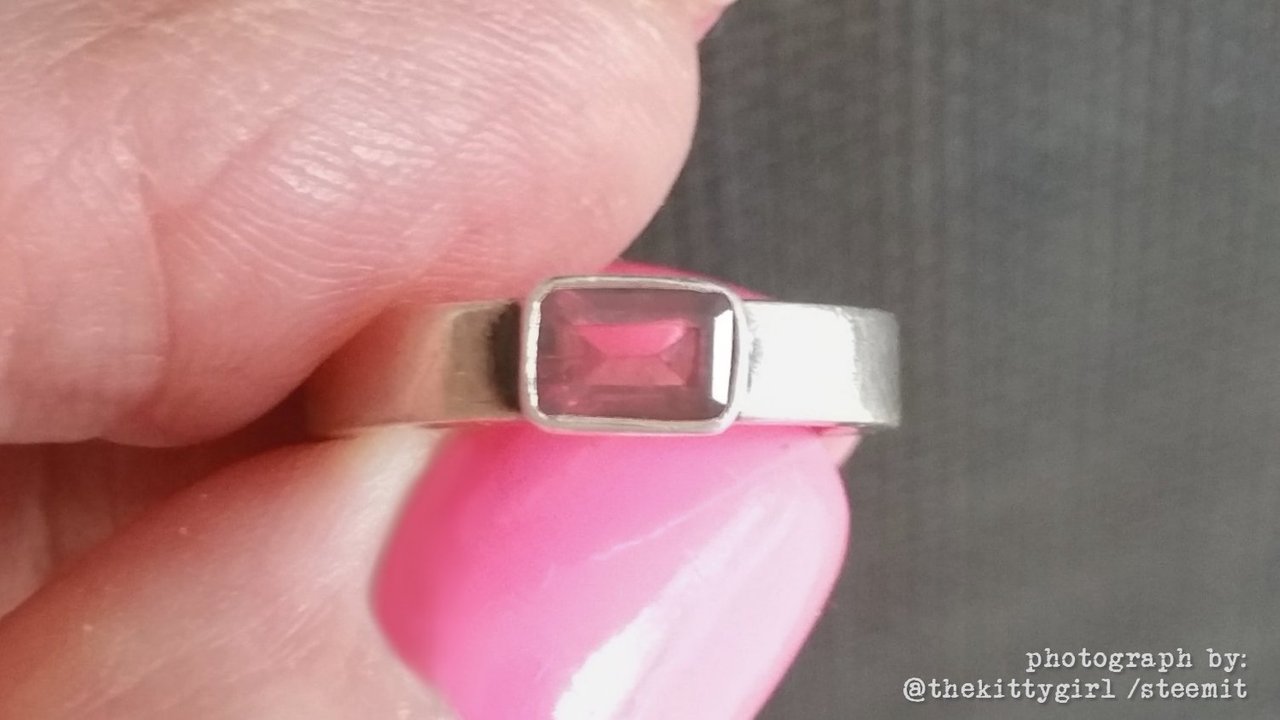
Also in my mineral collection is a hunk of garnet which was cut as a specimen, not for jewelry purposes. This piece is fascinating for demonstrating how semi-opaque the stone can often be, particularly in a thick sample. In very bright light, such as direct sunlight, only a small portion of the interior of the stone can be seen, as exhibited in this photo made shortly before I wrote this post:
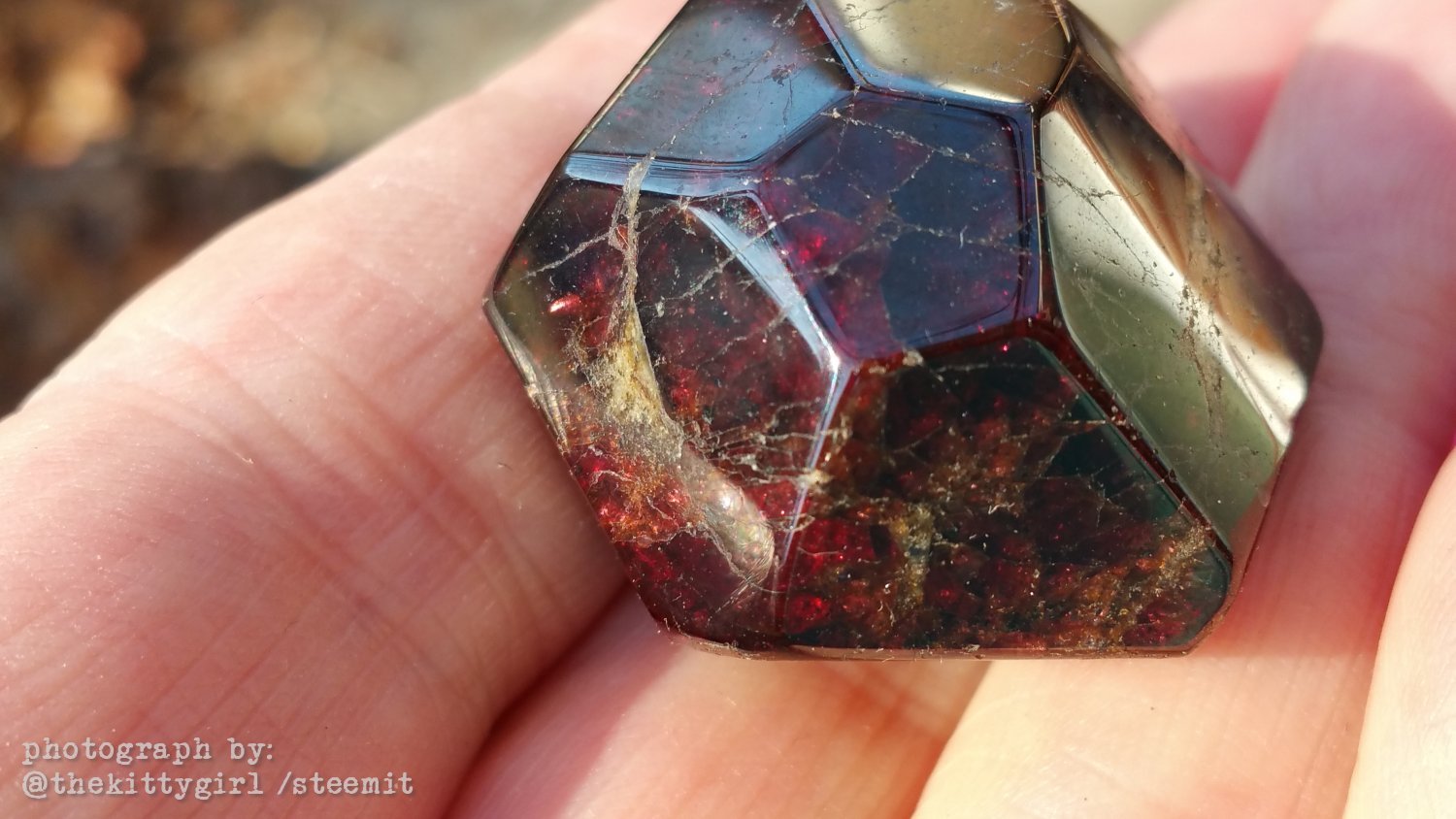
One of the most interesting webpages about garnets can be found on gemselect.com because they list scientific properties of the stone, different varieties, locations around the world where each variety can be found, metaphysical properties, how to care for garnet jewelry, and many other interesting things.
Thank you for exploring the fascinating world of garnets with me! 😊
This is another entry in the ColorChallenge which @kalemandra began.



